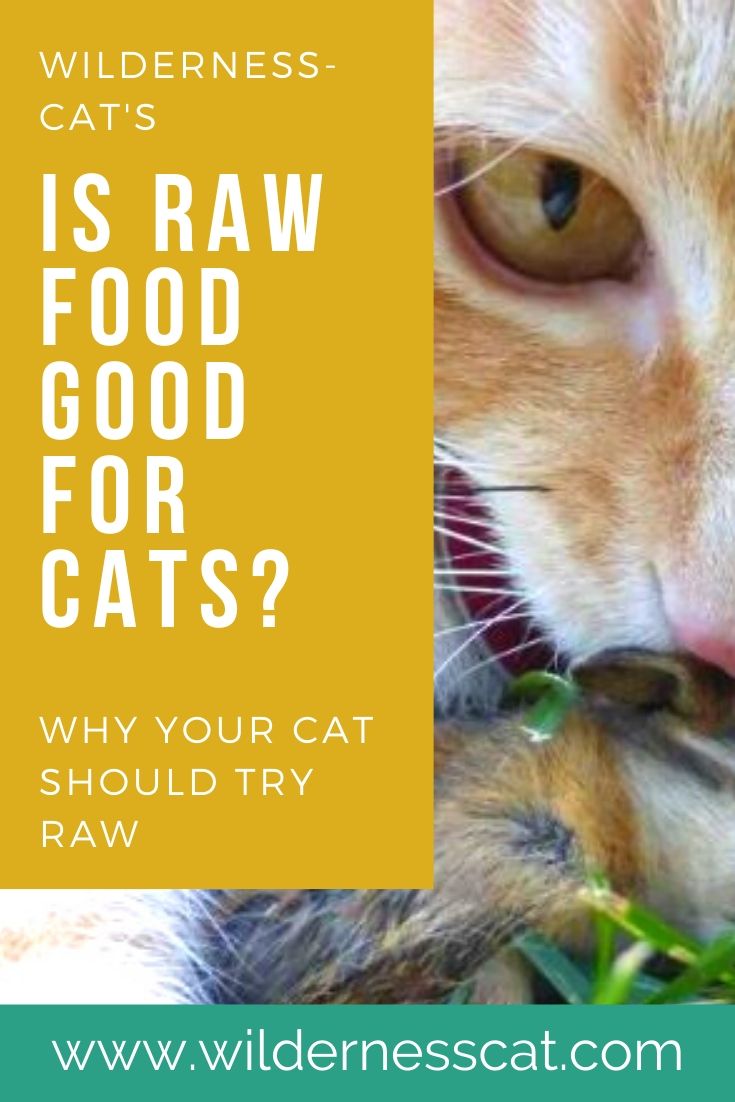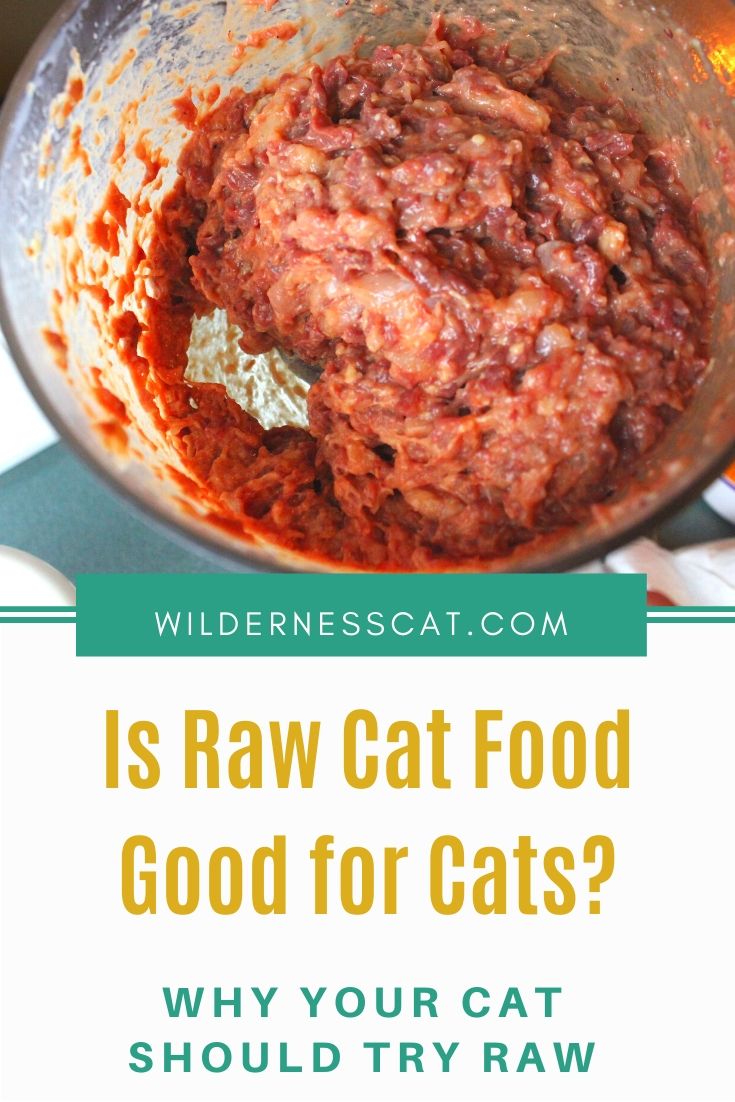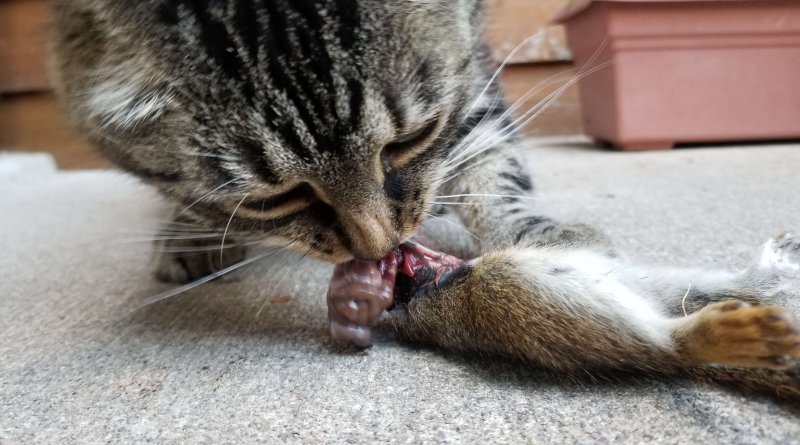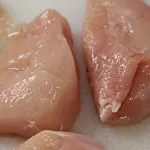Is Raw Food Good for Cats? Why Your Cat Should Try Raw
Last Updated on
Is raw food good for cats? Let’s figure this out! There’s a lot of debate surrounding raw cat food and we’re going to dive into some of the common questions that come up when first considering switching to raw. If you want to get started feeding your cat raw now, click here to go to the bottom of the page. We’ve put together some resources so you can get started making homemade raw cat food and also shared some reviews of our experiences with different premade raw cat foods.
Quick Navigation
- 1. Is raw food good for cats?
- 2. Is raw food better for cats than the typical dry or canned cat food?
- 3. Conclusion: Why we believe raw cat food is a good choice for cats.
Disclaimer: Some of the products recommended in this post have affiliate links. If you make a purchase through these links, we’ll receive a small commission, but it won’t cost you any extra. Thank you!
Is raw food good for cats?
We’re going to explore a few key departments that are often praised as areas in which raw cat food excels and surpasses its dry and canned counterparts. Asking these questions should help you to get a better understanding of what makes raw cat food special and how we decide if it’s a good choice or not.
Is raw food better for cats’ hydration?
In the wild, cats live off of the prey they kill. This prey is comprised largely of water, meaning that the animals they consume provide enough water so that they don’t have to drink much outside of their food. This fact combined with the domesticated cat’s origins as a desert creature means that cats are disinclined to drink as much water as they need.
So, dry food = dehydrated cats.
Unfortunately, if your cat consumes only dry cat food, their crunchy kibble doesn’t provide the natural water content that a cat would naturally consume through their food. Even if your cat does drink water, it’s unlikely that a cat living off of dry food is getting properly hydrated. Inadequate hydration can lead to urinary tract disease.
Raw food contains a lot of moisture and is hydrating for your cat just like their natural prey. Cooked canned food will also provide adequate hydration, so raw food isn’t the only solution to the feline dehydration problem.
Is raw food better for cats’ dental health?
Feline periodontal disease is a pretty big issue for the modern cat. Dry food is often recommended instead of wet food with the suggestion that it helps to clean tartar from cat teeth. While we wish that were true, feeding your cat dry food works little better than eating Melba toast instead of brushing your teeth. The downsides of dry food continue to outweigh the benefits.
While brushing your cat’s teeth may be the best solution to preventing dental issues, offering your cat a raw, bony piece of meat might be the next best thing. Gnawing on raw food engages your cat’s teeth and jaws in a way that the average cat food does not. When it comes to preventing periodontal disease and keeping your cat’s mouth in great shape, it’s hard to beat raw feeding.
Is raw food better for cats’ weight management?
Advocates of raw food say that it has had myriad benefits for their cats, reporting everything from appetite improvement, eradication of disease, improved skin and fur health, and weight loss. However, a balanced diet of any sort can help with weight management.
Serving your cat a properly-portioned and balanced raw diet can help them to maintain a healthy body weight or to lose weight.
Is raw food better for cats than dry or canned cat food?
Now that we’ve looked at some of the top reasons people choose to feed their cats a raw diet, let’s compare raw cat food to other types of cat food. First, let’s look at the reasons why some people disagree with feeding raw cat food.
The problem with raw cat food.
Raw cat food is not right for every cat. Some cats with compromised immune systems will not be able to deal with the pathogens naturally occurring in raw meat.
Salmonella and E. coli are common bacteria appearing in raw cat food, and these bacteria can cause illness in some cats. Cats with healthy immune systems can easily digest raw food and be unaffected by these bacteria, while cats with compromised immune systems can be made sick by contact with these pathogens. It’s recommended that you consult a veterinarian before giving your immunocompromised cat raw food.
Handling raw food can also be a danger for humans. However, this problem can be neutralized through proper sanitization and food handling procedures. Always wash your hands and sanitize the kitchen, just as when you prepare meat for cooking. Good hygiene can ensure that preparing raw food for your cat does not make your family sick.
Raw-fed cats may also be constipated—most raw cat food recipes don’t include any fiber and are only comprised of highly-digestible ingredients. For more information on raw cat food and constipation, check out our article, The Truth About Raw Cat Food and Constipation.
Shop Raw Cat Food on Chewy.com
The problem with other cat foods.
Cats are naturally obligate carnivores. This means that in nature, they eat animals. Not just muscle meat, either—whole animals. The combination of muscle meat, bones, and organs make their prey nutrient-rich.
The food typically fed to cats is a cheap formula designed to imitate the medley of nutrients that come naturally in an animal.
In fact, commercial cat food is fairly new and therefore, not a very well-developed industry.
In the 1930s, when commercial cat food was first created, there was no such thing as dry food for cats. As we mentioned earlier, cats have naturally low thirst drives. They need to consume water through their food. Most early wet cat foods were made of fish—not even a natural part of a cat’s diet. By 1946, dry food made up 85% of the pet food market. Later, human food companies used the booming pet food market as a great way to make use of byproducts from human food manufacturing.
Pet food has always been primarily meant to be cheap and sellable – not necessarily nutritious.
In the ’60s, pet food marketers began pushing the idea that table scraps were unsafe for pet consumption. In 1964, a huge marketing campaign by pet food industry lobbyists (the PFI) helped to brainwash America into the fear of table scraps.
Today, reliance on commercial cat foods is virtually absolute.
What’s more, there is a profit motive for vets to sell certain commercial pet foods, regardless of their actual nutritional value. Here’s one statement from Colgate-Palmolive, the company behind Hill’s Science Diet:
“…hundreds of thousands of dollars a year funding university research and nutrition courses at every one of the 27 US veterinary colleges. Once in practice, vets who sell Science Diet and other premium foods directly pocket profits of as much as 40%” (Parker-Pope, T. 1997. For You, My Pet. The Wall Street Journal. 3 November 1997. In Lonsdale, T. 2001. Raw Meaty Bones. p266).
Starting in veterinary school and throughout their practice, veterinarians are indoctrinated to believe that these unnatural cat foods are the healthy choice. Some vets will tell you that raw food is better for cats, but many of them have a good reason not to.
We’re not saying all commercial cat food is bad.
Not every prepackaged cat food was placed on the shelf by Big Pet Food with the intent to part you from your money in exchange for a cheap scam they call cat food. There are a ton of cat food manufacturers that create biologically appropriate foods, full of meat protein and with a transparent ingredient list.
For a cat food you can trust: read our review of NomNomNow delivery cat food.
We’re just saying, don’t believe anyone who tells you that it’s impossible to make nutritious food for your cat at home. Yes, you have to be careful, conscientious, and do your research to ensure your cat stays in good health. But it’s not impossible or inherently dangerous.
This leads us to the answer to our question. Is raw food good for cats?
Yes, we believe raw food is good for cats.
In our experience, the benefits outweigh the negative effects when it comes to feeding your cat raw food.
A raw meat diet is a biologically-appropriate choice for cats, and if fed properly, it can hold many benefits for your cat.
Many people who feed their cats raw food believe it contributes to their cats’ health. We’ve heard of raw-fed cats developing softer coats, healthier skin, and firmer stools, while their appetites become healthy and balanced.
Remember, like any diet, raw food isn’t right for every cat. Cats with compromised immune systems may not be able to safely eat raw food. Similarly, there is a chance that humans can get sick from handling raw food without properly cleaning up afterward.
If you’re interested in feeding your cat a raw diet, we have resources for you.
Homemade Raw Cat Food Resources:
- Wildernesscat’s Raw Cat Food Recipe PDF (Free Download)
- How to Make Raw Cat Food: 11 Tips to Make Raw Feeding Easy
- DIY Raw Cat Food: Why You Should Use a Raw Cat Food Supplement
We Tried Premade Raw Cat Food:
- Tucker’s Raw Cat Food Review: Recall History, Ingredients, and More
- Fegnion Raw Cat Food Review: We Tried Raw Cat Food
Did you find this post useful? Pin it for later!










